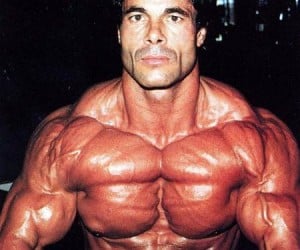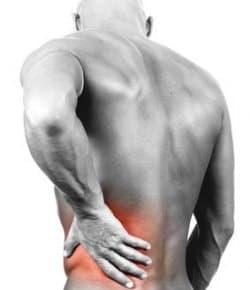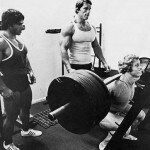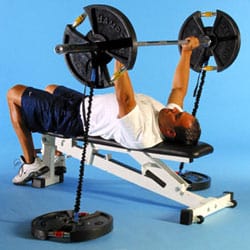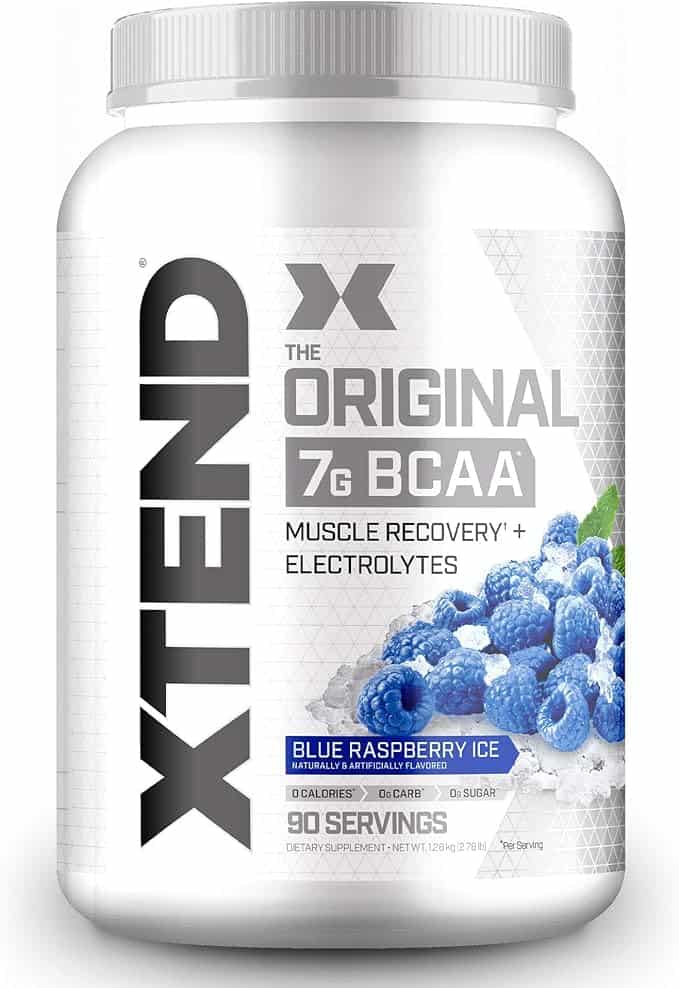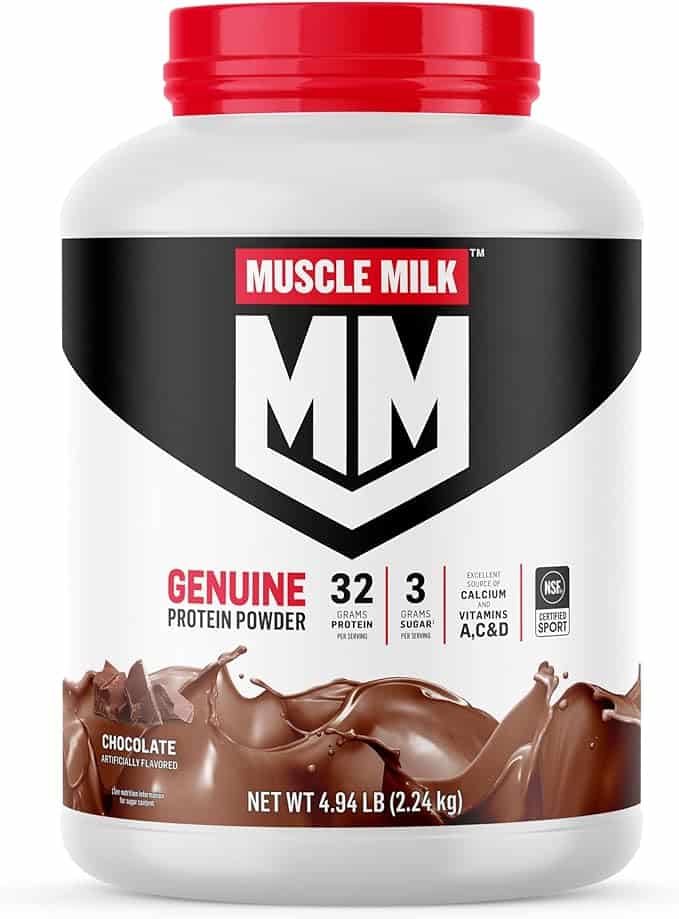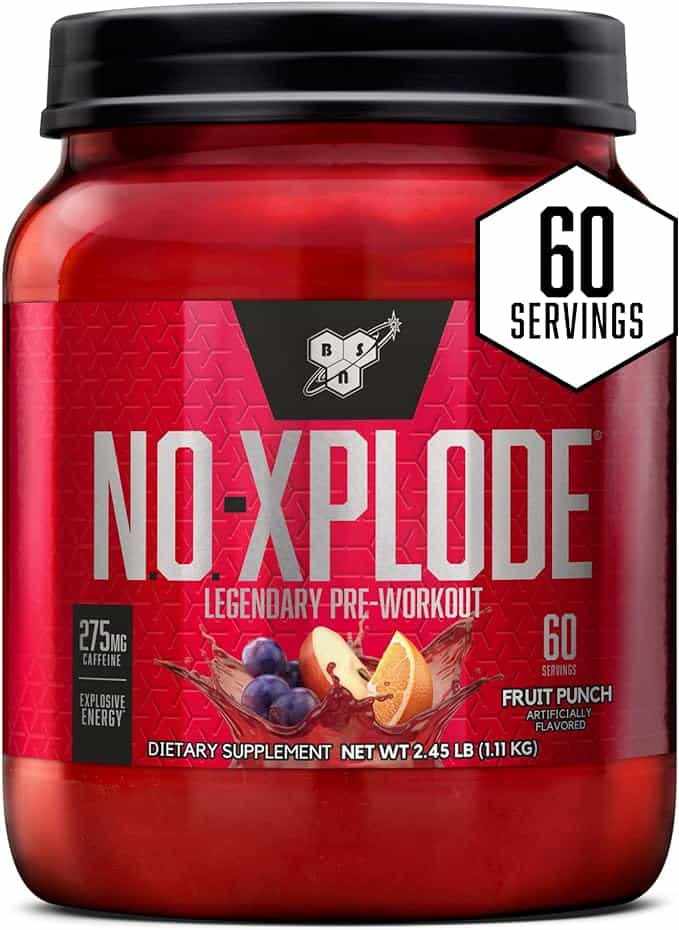Posts Tagged ‘powerlifting’
Wednesday, May 29th, 2024
A few years ago, Josh Hanagarne, aka The World’s Strongest Librarian, sent me this great piece of work on grip training. Enjoy. (BTW, the quote in the title is from Abraham Lincoln).
I got into grip training for two reasons:
Number one, it looked fun and people I liked were doing it. Monkey see monkey do.
Second, I was getting strong enough that my hands were starting to become my limiting factor. This was a sobering realization which took place at the intersection of Lame and Weak.
Like most things I like right off, once I jumped in, I jumped in all the way. Grip training was addictive for me. Better yet, it gave me one more way to make progress, which is usually the major ingredient in how happy I am. I could either set aside dedicated days for grip work or, the more I learned, I could squeeze it into my normal workouts without much of a headache.
Before I tell you how I add grip training to your workout, I just want to give you a quick look at four different types of hand strength so that you don’t overemphasize anything or neglect anything that could be useful to you.
(more…)
Tags: arms, exercise, fingers, fitness, grip, grip strength, grip training, hands, powerlifting, strength, strongman, workout
Posted in Exercise, Exercise Technique, Fitness Tips | No Comments »
Sunday, December 6th, 2020
Powerlifting is in trend nowadays. Not just because it is different from the regular weight lifting we do in the gym, but for having amazing health benefits also. Weightlifting involves the repetition of exercise sets of lifting weights again and again. On the other hand, powerlifting involves lifting of maximum humanly possible weight in one time without any repetition of sets. Moreover, powerlifting results in boosting muscles and building the core strength of the human body.
(more…)
Tags: health, powerlifting, strength
Posted in Weight Training | No Comments »
Monday, February 23rd, 2015
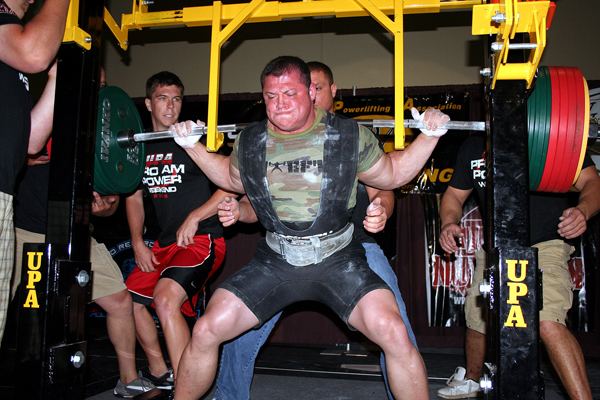 Whether you are a body builder, powerlifter, Olympic lifter, or recreational athlete, you’ll probably get a kick out of seeing just how much you can lift (or in some cases, it’s your job). While some weight lifters try to hit a new 1 repetition maximum (1RM) on the main lift every single workout, this is usually not a good idea. The potential for injury and over training increases with every max effort lift you attempt. Instead, a better philosophy is to ramp up to testing your 1RM using several 3-4 week micro-cycles. However, that is a discussion for another day.
Whether you are a body builder, powerlifter, Olympic lifter, or recreational athlete, you’ll probably get a kick out of seeing just how much you can lift (or in some cases, it’s your job). While some weight lifters try to hit a new 1 repetition maximum (1RM) on the main lift every single workout, this is usually not a good idea. The potential for injury and over training increases with every max effort lift you attempt. Instead, a better philosophy is to ramp up to testing your 1RM using several 3-4 week micro-cycles. However, that is a discussion for another day.
Today I want to address the 1RM test itself, or more accurately the max effort test. If you are not in a competition at that exact moment, there is really no need to attempt a true 1RM. As long as you have a stable frame of reference for your max effort attempt, you will be able to quantify your progress. I would like to suggest using 2RM for your max effort attempt. The reasons for this are several – safety, psychological, CNS activation, and time under tension.
Strength coach Christian Thibaudeau explained it best throughout a series of 6 tweets titled “2RM better than 1RM for max effort.”
2RM better than 1RM for max effort
In case you are not subscribed to Christian’s Twitter feed or Facebook page, allow me to re-print his thoughts below:
- REASON 1: puts you in a better mindset for success; implies that you will succeed on the first rep
- REASON 2: safer as you can always stop after the first rep if you don’t feel the second
- REASON 3: more practice with near-maximal weights, better development of strength-skill and CNS
- REASON 4: MUCH less negative impact on CNS (measured by HVT monitor) with a 2RM vs. a 1RM.
- REASON 5: have a much lesser psychological strain than 1RM and don’t require being in the zone as much
- REASON 6: more fatigue (stimulation) imposed on the recruited FT fibers = more growth stimulation
Connect with Christian on Twitter
Tags: 1rm, 2rm, max effort, powerlifting, strength
Posted in Weight Training | No Comments »
Thursday, June 27th, 2013
Bodybuilders have some really inspirational and also some really funny quotes. Here are 3 of my favorites from Jacked Pack’s recent list of 25.
“Friends come and go, but 200 lbs is always 200lbs”
– Henry Rollins

(more…)
Tags: body builder, bodybuilder, bodybuilding, funny, humor, inspiration, powerlifter, powerlifting, quotes
Posted in Bodybuilding | No Comments »
Friday, April 19th, 2013
 Regardless of the type of exercise regimen you’ve chosen, chances are that sooner or later you’re going to push yourself too hard and suffer some type of injury. Even if you’re careful, accidents can happen, so you want to be prepared when they do.
Regardless of the type of exercise regimen you’ve chosen, chances are that sooner or later you’re going to push yourself too hard and suffer some type of injury. Even if you’re careful, accidents can happen, so you want to be prepared when they do.
Luckily, the most common types of injuries that occur during exercise, such as sprains, strains, muscle cramps, and the like, are not too detrimental, although contact sports, for example, can certainly lead to more serious bodily harm. When it comes to addressing these issues so that you can get back on track with your workout routine, there are a few simple steps you can take to ensure a speedy recovery.
Here are some tips that should help you to treat any injuries you may sustain.
-
Diagnosis.
The first thing you need to do is determine the severity of your injury.
For example, it’s important to know the difference between a muscle cramp, which may be treated fairly immediately through stretching and hydrating, and a sprain or strain, which will certainly require more than a few minutes of rest and light stretching to correct before you can get back to lifting weights or swimming laps.
Although you may not be as qualified as a doctor to diagnose common exercise injuries, and you may therefore want to call your physician for an exam if you’re not sure about the cause of ongoing or chronic pain, most athletes and even amateur exercise aficionados can tell when something is seriously wrong and when they can handle recuperation on their own.
(more…)
Tags: deadlifts, exercise, fitness, injuries, injury, Medical, powerlifting, Weight Training, weightlifting
Posted in Fitness Tips, Injuries, Weight Training | 1 Comment »
Monday, March 25th, 2013
Shoulder Rehab

Chronic Shoulder Instability and Impingement Syndrome are the most common types of shoulder injury. Chronic Shoulder Instability occurs when the ‘head’ of the upper arm bone moves out of the shoulder socket. This results in a shoulder joint dislocation and causes great pain. On the other hand, impingement syndrome is prompted by friction occurring between the shoulder blade and rotator cuff. The friction from the rotator cuff and the shoulder blade may be caused by inflammation in a tendon or muscle.
Preparations to Rehab an Injured Shoulder
It’s important to remember that any injury needs to be checked and treated by an accredited physician. They may recommend medication and several rehabilitation techniques to encourage the shoulder to heal and function as soon as possible. The Physician will also be able to see the specifics of your injury that may alter they way you would treat it. Here are some tips to consider when preparing an injured shoulder for rehabilitation.
(more…)
Tags: back, exercise, fitness, injuries, injury, injury prevention, Medical, powerlifting, prevent, prevention, rotator cuff, shoulder, shoulders, Weight Training, weightlifting
Posted in Fitness Tips, Injuries, Medical | No Comments »
Monday, February 25th, 2013
How to Prevent Injuries that Will Derail Your Progress

Adding weight lifting to your workout routine on a weekly basis can offer the average fitness buff a world of benefits.
For one thing, it can make you stronger, as expected, helping you to overcome obstacles in other types of exercise (running faster, throwing farther, jumping higher, etc.). But it can also help you to create the physique you’ve been trying for (whether it’s bulking you crave or simply a frame that features better muscle tone) and even lose weight if that’s what you want (muscle burns more calories than fat). And that’s just the beginning.
Weight lifting, when done improperly, can also result in a slew of injuries, most of which can be easily avoided by warming up and cooling down, building up to greater weights or more reps over time, using proper form, listening to your body, and asking for help from a spotter.
Here are just a few common weight lifting injuries that are best avoided:
(more…)
Tags: back, exercise, fitness, injuries, injury, injury prevention, Medical, powerlifting, prevent, prevention, rotator cuff, shoulder, Weight Training, weightlifting
Posted in Fitness Tips, Injuries | 1 Comment »
Tuesday, February 5th, 2013
 Weight lifting is a great way to exercise, build toned muscle, burn calories, and promote overall health–but it can be dangerous as well. Our bodies aren’t used to the stress of heavy lifting, and our backs are particularly vulnerable to strain and injury.
Weight lifting is a great way to exercise, build toned muscle, burn calories, and promote overall health–but it can be dangerous as well. Our bodies aren’t used to the stress of heavy lifting, and our backs are particularly vulnerable to strain and injury.
An injured back can keep you out of the gym for weeks, or even months at a time, depending on the severity of the injury and your ability to recover. If you want to stay healthy, strong, and transform your body into a work of art, always remember to protect your back.
Step 1: Warm Up
Never start a workout without warming up first. Your body just isn’t ready for the stress of heavy lifting when you walk through the gym doors. You need to get primed before you start hitting the weights.
- A short cardio warm up on the treadmill or elliptical is a great way to warm up your muscles and get the blood moving in your body. It is not necessary to use high intensity during your warm up. This is just a 5 minute effort to get the muscles moving.
(more…)
Tags: back, deadlifts, exercise, fitness, injuries, injury, Medical, powerlifting, Weight Training, weightlifting
Posted in Fitness Tips, Injuries | 1 Comment »
Friday, January 18th, 2013

Injuries
Nearly everyone who trains, whether bodybuilding, powerlifting, strongman, or just a general fitness routine, has at some point suffered from an injury. And whether it’s a minor sprain or a broken bone it can definitely derail your progress towards your fitness goals, leading to weeks or months of recovery in which all of your hard work slowly slips away via loss of both muscle mass, strength, and conditioning.
My Personal Experience
I mean, I once walked into a Gold’s Gym after taking about a month off from training, with the intention to deadlift. I wasn’t planning to hit a 1rm or a PR that day. It was just simple sets of 5 to get back into the rythym. On the second set, at 50% of my previous 1rm, my back spasmed, I dropped the weight, and I was out of the weight room for another solid month.
Every athlete and weightlifter has some version of this sad story.
(more…)
Tags: back, deadlifts, exercise, fitness, injuries, injury, Medical, powerlifting, Weight Training, weightlifting
Posted in Fitness Tips, Injuries | No Comments »
Monday, May 14th, 2012
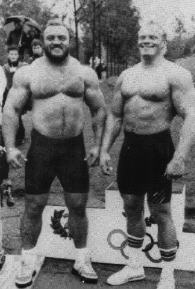 I’m sorry to post so many videos, but this World’s Strongest Man 30 Years of Pain is a must-watch for any fan of strongman or powerlifting. I did not know Jón Páll Sigmarsson died at age 33. What a bum deal.
I’m sorry to post so many videos, but this World’s Strongest Man 30 Years of Pain is a must-watch for any fan of strongman or powerlifting. I did not know Jón Páll Sigmarsson died at age 33. What a bum deal.
In the meantime you’ve got Magnus Ver Magnusson, Magnus Samuels-son, Svend Carlson, Phil Phister, Marisuz Pudianowski, and many others. Granted, maybe 1 in 100 of these guys were not on the juice, but every single competition is inspirational.
Anyway, Kaz is nuts and so are the rest of the old school strongmen. If you only care about losing fat, don’t bother with this video, but if you’ve ever watched the WSM finals during Christmas vacation, and you actually knew the finalists and had a favorite, you have to watch this.
‘Nuff said.
(more…)
Tags: powerlifting, strongman, words strongest man, wsm
Posted in Contests, Motivation, Videos | No Comments »
Monday, October 17th, 2011
First a quote, then an excerpt from Henry Rollins’ The Iron
“Strength is the product of struggle, you must do what others don’t to achieve what others won’t.”
“Through the years, I have combined meditation, action, and the Iron into a single strength. I believe that when the body is strong, the mind thinks strong thoughts. Time spent away from the Iron makes my mind degenerate. I wallow in a thick depression. My body shuts down my mind.
The Iron is the best antidepressant I have ever found. There is no better way to fight weakness than with strength. Once the mind and body have been awakened to their true potential, it’s impossible to turn back.
The Iron never lies to you. You can walk outside and listen to all kinds of talk, get told that you’re a god or a total bastard. The Iron will always kick you the real deal. The Iron is the great reference point, the all-knowing perspective giver. Always there like a beacon in the pitch black. I have found the Iron to be my greatest friend. It never freaks out on me, never runs. Friends may come and go. But two hundred pounds is always two hundred pounds.”
Henry Rollins – a legend
Tags: bodybuilding, henry rollins, muscle, powerlifting, quote, strength, struggle, the iron
Posted in Celebrity, Quote of the Day | 2 Comments »
Wednesday, July 6th, 2011
Do Bodybuilders Have to “Max Out” to Gain Muscle?
You may have seen or heard cliche slogans like “Go heavy or go home.” You may have been asked “How much do you bench?” You may even be impressed by Olympic lifters, powerlifters, and professional strongmen, all of whom regularly use maximum effort triples and singles to prepare for competition, to try to set a personal record, or just as a component of their regular training routines.
Well guess what? None of those sports are like bodybuilding. Sure, Olympic lifters are typically pretty jacked, powerlifters and strongmen are just plain “big”, but very few of them could compete in a bodybuilding competition and hope to win, without first dieting and training like a bodybuilder for several months.
This brings us to the question – do bodybuilders ever actually have to test their 1 or 3 rep max on any exercise? Do they have to lift super-heavy?
(more…)
Tags: bodybuilding, building muscle, fitness, gain muscle, heavy, max, max effort, maximum effort, muscle growth, myth, myths, powerlifting, strength, strongman, training, weight lifting, weightlifting
Posted in Bodybuilding Myths | 2 Comments »
Monday, July 4th, 2011
Should Bodybuilders Train When They Are Sore?
This is one of the top offending bodybuilding myths. Have you ever canceled a workout or skipped training a body part because it felt sore, even though at least 48 hours had passed since you trained it? If you said “Yes”, then after reading this post you will never make that mistake again.
Your muscles will get sore when you use:
- heavy weights
- slow negatives
- forced negatives
- assisted negatives
- drop sets
- high volume
Do you need to avoid these training methods completely in order to prevent soreness, so that you can train again in two days? Not necessarily.
(more…)
Tags: bodybuilding, building muscle, doms, fitness, gain muscle, heavy, max, max effort, maximum effort, muscle growth, myth, powerlifting, sore, sore muscles, soreness, strength, strongman, training, weight lifting, weightlifting
Posted in Bodybuilding Myths | No Comments »
Friday, March 4th, 2011
Extra Workouts Part 1 – Neural Activation Training

Today I am going to unleash your next greatest training tool.
First we are going to talk about training frequency and extra workouts, then I will get into something I call Neural Activation Training, which you can use upwards of 2-3 times a day in addition to your regular workout routine. This type of training won’t induce overtraining and can help you develop speed and power like you’ve never had before, which leads to increased strength and size. Neural Activation Training also just happens to increase fat loss.
*** Do I have your attention? ***
Good! Read on.
Extra Workouts
If you want to know about adding extra workouts to your routine, you are on the right track. If you don’t know what an extra workout is, which many of you don’t judging by my recent poll, then this is the place to learn.
For some time now I have written about using extra workouts to increase training frequency, and the benefits of increased training frequency over time. When I say increased training frequency, I don’t mean increased volume in a single 60 minute workout. I mean putting varying types of stress on every muscle group as frequently as possible, such that the target muscle group can still optimally recover. Volume is increased over time, but frequency is maximized.
I referenced increased training frequency in my Werewolf Training routines and in my Fat Loss for Men & Fat Loss for Women routines. In fact, I base most of my workout routines around increased training frequency at this point because I know how effective it is.
(more…)
Tags: bodybuilding, extra workouts, neural adaptation, power, powerlifting, speed, strength, strongman
Posted in Exercise Technique, Weight Training | 22 Comments »
Monday, August 9th, 2010
How to Increase Your Squat By 100 Pounds in 10 Weeks
Update: Here is an old post I found about increasing your squat strength. I’m not sure that anyone ever really gave me much positive feedback on it, so I’m posting it again in case anyone wants to take a stab at putting 100 pounds on their squat in 10 weeks.
The squat is arguably the best exercise that any athlete can perform. Overhead press, bench press, and deadlifts rank right up there too, but I digress… No one wants to have a weak squat. To be considered ‘really strong’ you should be able to squat 2x your bodyweight.
Back in college I was regularly squatting 450 or so at a fluctuating bodyweight of 190-210 lbs. I have no genetic gifts when it comes to muscle size and strength. If I can lift 450 anyone can, so man up and put in some effort.
The goals of this workout plan are:
(more…)
Tags: how to, intensity, powerlifting, squats, squatting, training, weightlifting, Workout Routines
Posted in Weight Training, Workout Routines | 79 Comments »
Friday, June 4th, 2010
I recommend training with bands specifically in the Werewolf Training routines, but also in any routine you might currently be following.
Recent studies investigating the effects of training the bench press with added bands and chains, have confirmed that strength and power increased faster by using bands and chains than by using free weights alone.
The Study
In this 13 week study on the effects of training with elastic tension on the bench press, 11 men in their early 20s started with a 1 rep max (RM) baseline strength test.
(more…)
Tags: bands, chains, gain strength, powerlifting, strength, strength gain, strength training, weight traning, weightlifting
Posted in Exercise Equipment, Research, Weight Training | No Comments »
Friday, March 26th, 2010
I haven’t verified this tip yet, but Charles Staley once said that you can lift more weight if you look at your dominant hand when benching. Although you are not supposed to turn your head at all.
Really, I have no idea if this works, but if you give it a try please let us know what happens. It doesn’t sound like anything I would ever tell anyone to do, but maybe it has a place in max effort training?
I remain skeptical.
Tags: bench press, benching, chest, powerlifting
Posted in Fitness Tips | 3 Comments »
Wednesday, December 16th, 2009
1 Rep Max Calculator
I had published this post once before, but recently a couple people have asked for such a tool, so I’m busting it out again for all the new Project Swole readers.
There are many strength training programs that involve calculating your 1 rm or 1 repetition maximum. Some programs want you to use a % of your 1 rm, which is sometimes even harder to calculate.
Most of us do not how how to figure out this number without performing the actual rep itself. Use this easy calculator to get a basic idea of how much weight you can lift once.
(more…)
Tags: calculator, max, powerlifting, strength, weight lifting, Weight Training
Posted in Motivation, Weight Training, Workout Routines | 8 Comments »
Wednesday, March 18th, 2009
I want to start a new feature on Project Swole called Your Links.
Basically it works like this: leave a comment with your favorite link of all time for the list’s theme.
Today’s theme is Powerlifting.
The best links of all I will surely Stumble, Digg, Mixx, and submit to Health Ranker and OnlyWire.
Here’s my link of the day: Powerlifting Articles at Westside Barbell
Louie Simmons and the Westside Barbell guys write some seriously good training articles for powerlifters and strength athletes. Read them all.
An honorable mention is: Powerlifting Articles at Elite Fitness
Dave Tate runs Elite Fitness and he is a disciple of Louie Simmons, but is also an expert in his own right. Read all these articles too.
Now it’s your turn. But don’t submit links to non-powerlifting pages because I won’t approve those comments. =)
Tags: powerlifting, Your Links
Posted in Health | No Comments »






 Whether you are a body builder, powerlifter, Olympic lifter, or recreational athlete, you’ll probably get a kick out of seeing just how much you can lift (or in some cases, it’s your job). While some weight lifters try to hit a new 1 repetition maximum (1RM) on the main lift every single workout, this is usually not a good idea. The potential for injury and over training increases with every max effort lift you attempt. Instead, a better philosophy is to ramp up to testing your 1RM using several 3-4 week micro-cycles. However, that is a discussion for another day.
Whether you are a body builder, powerlifter, Olympic lifter, or recreational athlete, you’ll probably get a kick out of seeing just how much you can lift (or in some cases, it’s your job). While some weight lifters try to hit a new 1 repetition maximum (1RM) on the main lift every single workout, this is usually not a good idea. The potential for injury and over training increases with every max effort lift you attempt. Instead, a better philosophy is to ramp up to testing your 1RM using several 3-4 week micro-cycles. However, that is a discussion for another day.







